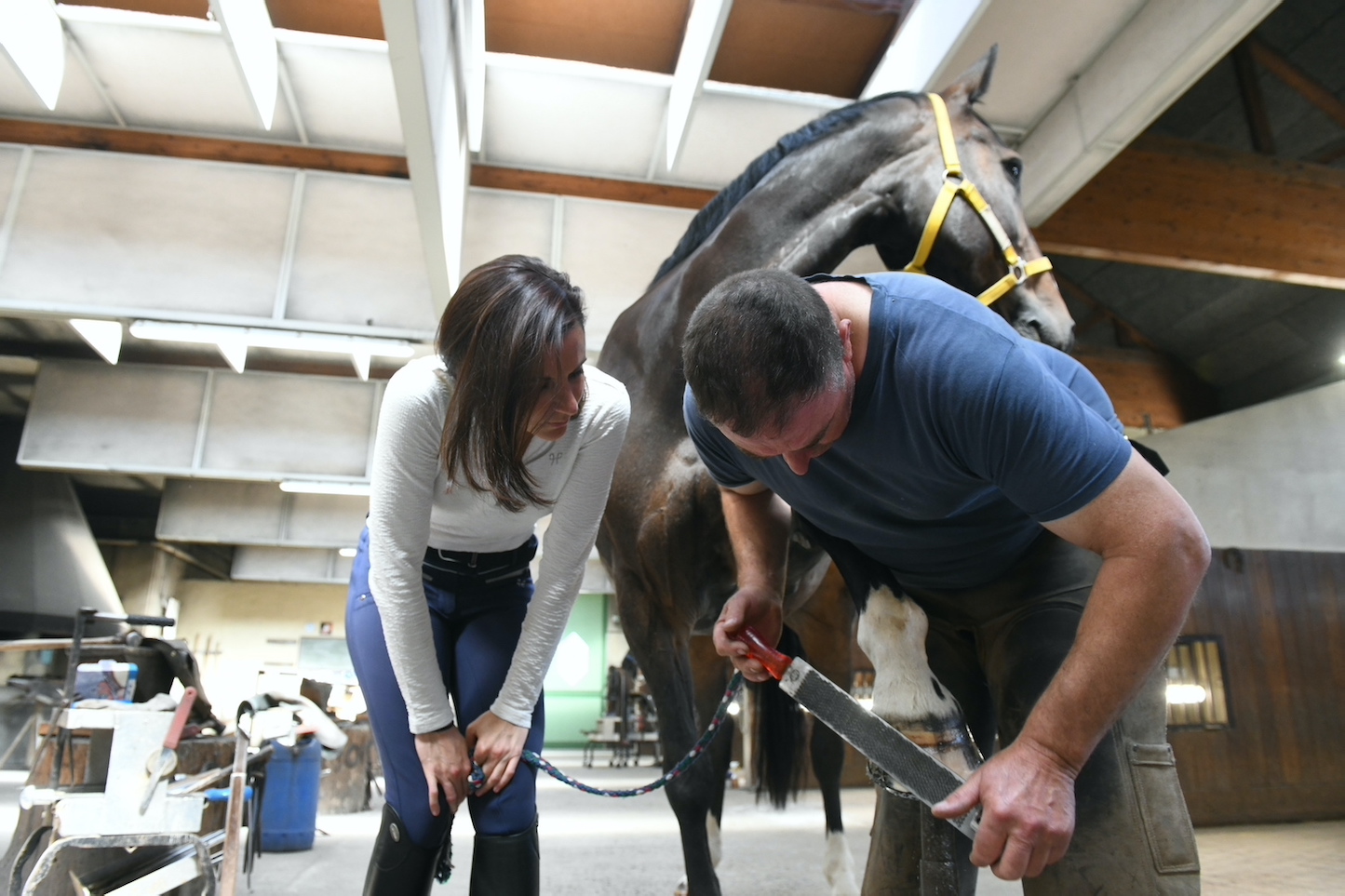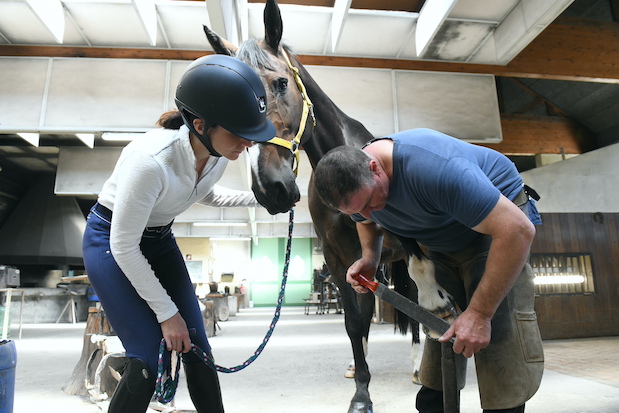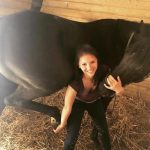Annual health book
Our Ravene expert Camille COLOMBO, indicates here what checkups are crucial to our beloved horses’ health and wellbeing: frequency, cautions, specialists to reach out to…
Vaccination and yearly vet check
Vaccination
During the annual vaccination visit, your vet carries out a clinical exam that encompasses at least an auscultation, and a check of eyes and teeth. According to the horse’s state, or to the owner’s questions, the vet can carry out a blood test, as well as other additional examinations.
Compulsory vaccine: Equine Flu
Strongly recommended: Tetanus, equine viral rhinopneumonitis (EVR)
Optional vaccine: Rabies
According to the activities and the transportation needs of the horses, some of those vaccines can become mandatory.
Deworming
The battle against horse parasitism is one of the yearly actions that require the most caution from the owner. The digestive parasites are a serious threat to your horse’s well being.
The protocol is tailored to each horse and varies according to its environment and way of life. Your vet establishes a calendar and defines what molecule suits him best according to the season and/or to the parasite type. You must give a dewormer to your horse at least twice a year. It is necessary to alternate the deworming molecules in order to limit molecule resistance and maximize its efficiency. Your vet can may also advise you to administer a garlic-based supplement in between two vermifuge.
Dewormer’s usage is not insignificant, that is why it is necessary to closely watch out for the horse after its administration. For an efficient and smart deworming, you can carry out regular coprology. Doing so enables to check if the vermifuge is needed and which molecule to use.
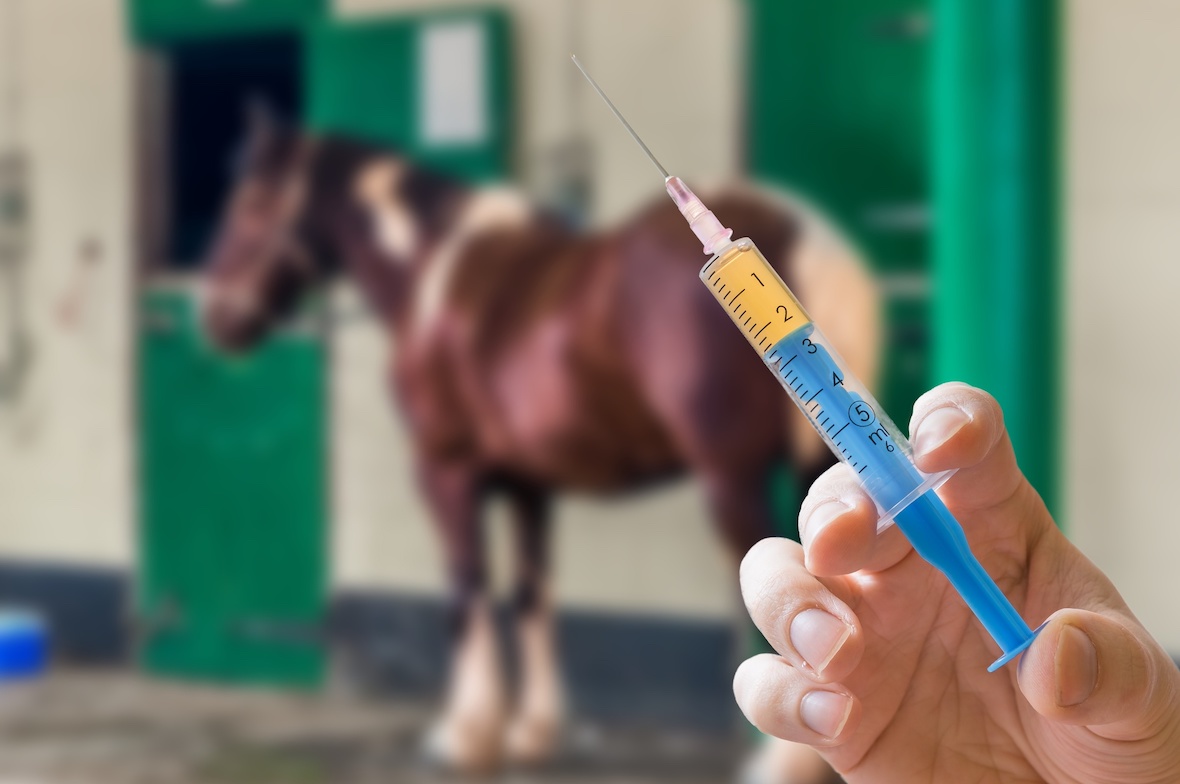
The dentist
The horse’s teeth continuously grow during his life! The teeth checkup made by either a vet specialized in dentistry or by a dental specialist has to happen once a year.
When the horses grow old, the teeth growth slows down. However, it is still important to maintain a regular mouth upkeep to prevent potential chewing issues and/or weigh loss.
Tooth pain can also generate secondary musculoskeletal disorders (neck pain, sacralgia, …) That is why the dentist should intervene before the chiropractor does.
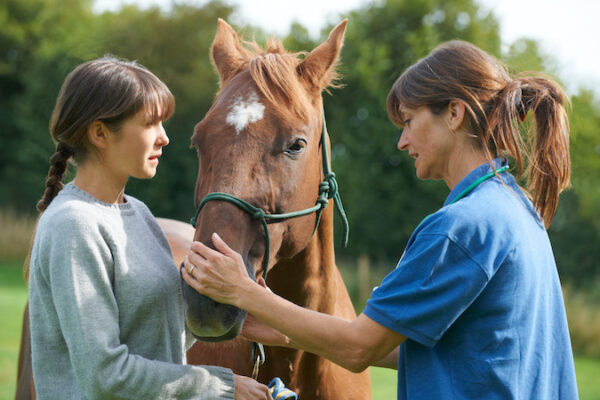
The equine chiropractor
If your horse has a regular training activity and lives in a box, it is advisable to have him manipulated by a chiropractor twice a year. Your chiropractor will indicate to you your horse’s ideal schedule and will let you know what to monitor, so that you can act quickly if there is a need to.
When should you call him/her?
After the dentist and/or (eventually) the vet’s visit, to have his/her agreement in the event of a tricky situation.
Why?
- Lameness
- Refusals (jumping)
- Lack of engagement of one or both hind legs
- Refusal of the bit
- A foot gets left behind
- Difficulties on circles
- Can’t do flying changes
- Avoids paces (automatically switches from trot to canter or disunited canter)
- Gets defensive when saddling/groomed
- Odd positioning of the head and/or neck
- Horse gets crooked when doing lateral work
- Quick weight loss
- Chewing issues
- After dental care
- Bad tail alignment
- Unusual behavior/drop in performances
- Non inflammatory leg waterlogging.
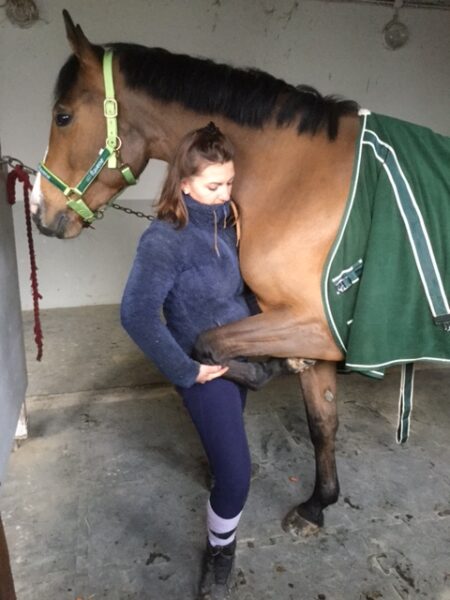
The farrier
Trimming
Trimming is one of the first treatment provided to a foal. Intervening early and thoroughly on that health aspect allows to avoid more invasive procedures in the future as well as potential repercussions one the horse’s biomechanics.
If there is no major limb conformation issue, the farrier intervenes gets approximately 8 weeks old. A grown horse should be trimmed each 5 to 7 weeks. The goal is to not let the feet grow long (elongate forward or grow too much on the heel).
Oftentimes, barefoot horses are left too long without proper trimming, as some people might think that they naturally trim on their own. However, wanting to gain some time in between two trims means loosing balance, as well as more time needed to correct such issues.
Shoeing
It is advised to shoe every 45 to 60 days, however it rather depends on the decision made by both rider and farrier. The frequency can vary according to the activity, the maintenance, seasons, and horn growth. For a normal foot, the choice belongs to the farrier, with of course the owner’s approval.
In some cases, the vet can advise orthopedic shoeing.
